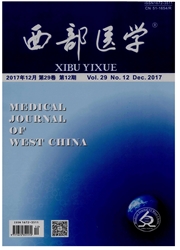

 中文摘要:
中文摘要:
目的选择结核杆菌耐链霉素(Sm)Rpsl基因包含88codon突变位点的序列设计分子信标,建立扩增体系及分子信标芯片检测方法。方法运用软件:Beacondesigner设计Rpsl基因包含88eodon突变位点的分子信标及及其单侧延长臂分子信标,建立其扩增体系及分子信标芯片检测方法,应用荧光显微镜观测荧光信号。结果通过荧光显微镜观测到标准株及耐SM株PCR产物与分子信标杂交后荧光信号区别明显;51株耐链霉素(SM)与10株H37RV标准株对照组荧光信号强度比较,P〈0.05和P〈0.01的耐SM组Rpsl基因88codon突变检出率为61%。结论分子信标技术是一种具有高灵敏核酸点突变检测技术。单侧延长臂分子信标对解决分子信标在芯片表面固定难题提供了一种有效方法,采用荧光显微镜观测荧光信号具有更强的荧光信号识别、放大功能及结果判断更准确等优点。
 英文摘要:
英文摘要:
Objective To design fair molecular beacon of Rpsl gene with mutation site including 88 codon of SM resistant MTB and its the amplification system, meanwhile, to find the detecting way with fluorescence molecular beacon chip. Methods The software, Beacon designer, was used to design the design molecular beacon and the molecular beacon with single extending arm of Rpsl gene with mutation site including 88 codon and the amplification system. The Fluorescence microscope and image analysis software were used to detect the fluorescent light and make a qualitative judgment. Results The difference between PCR products from standard strain and SM resistant one was obvious in detecting the fluorescent light. The mutational rate of 88 codons in Rpsl gene of resistant SM detected was about 61% The fluorescent light signal from the 51 SM resistant strains was much stronger than that in 10 H37RV standard strains. ConclusionsThe fair clamp probe technology is a technology with characteristics of high sensitiveness and specificity in detecting nucleic acid. It is a effective way to solve the problem of modifing the molecular beacon on the surface of chip by the probes with single extending arm.
 同期刊论文项目
同期刊论文项目
 同项目期刊论文
同项目期刊论文
 期刊信息
期刊信息
